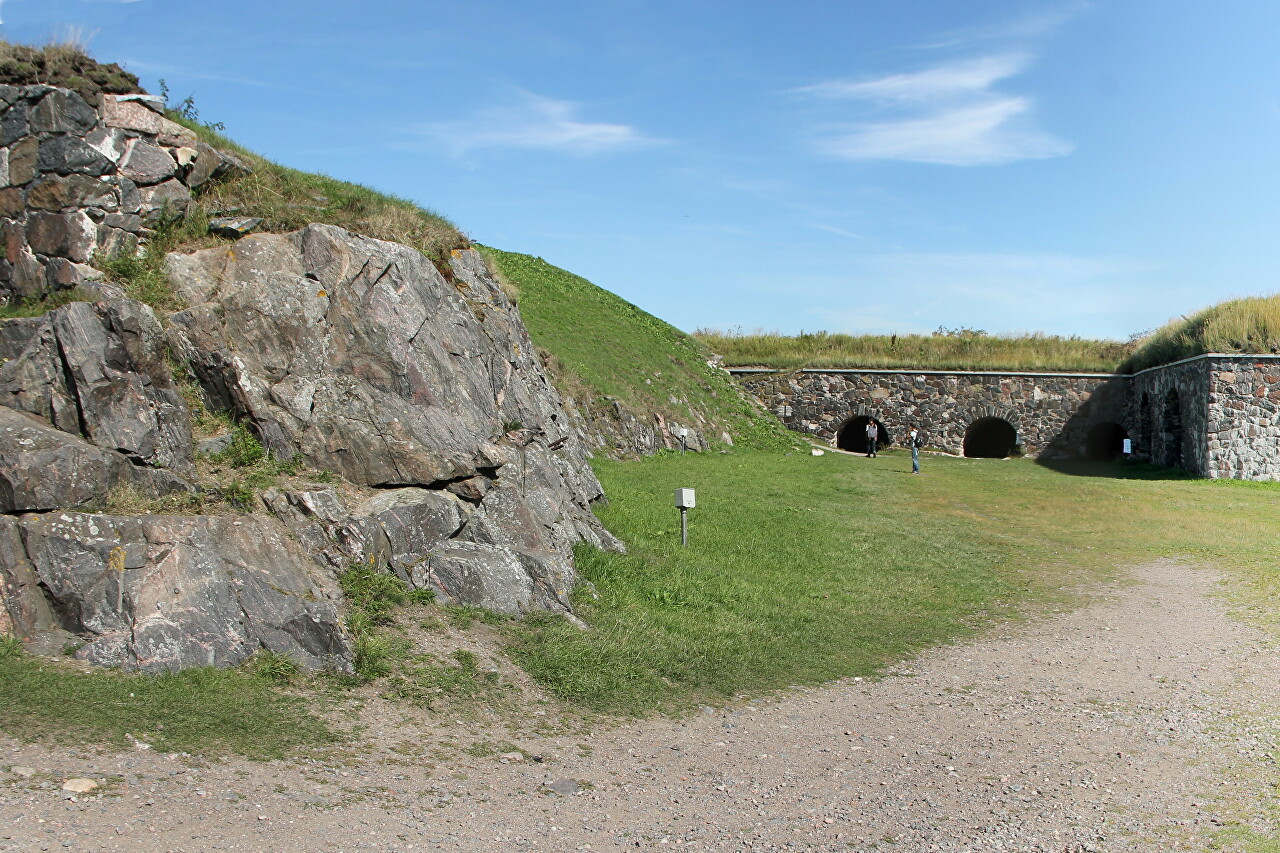Kustaanmiekka Shore Fortifications, Suomenlinna
On the southwestern shore of the island is one of the oldest and most important fortifications of the fortress, which protected the strategic fairway in the Kustaanmiekka Strait leading to Helsingfors. Four artillery bastions forming a broken line allowed firing in different directions, blocking both the strait itself and the approaches to it.
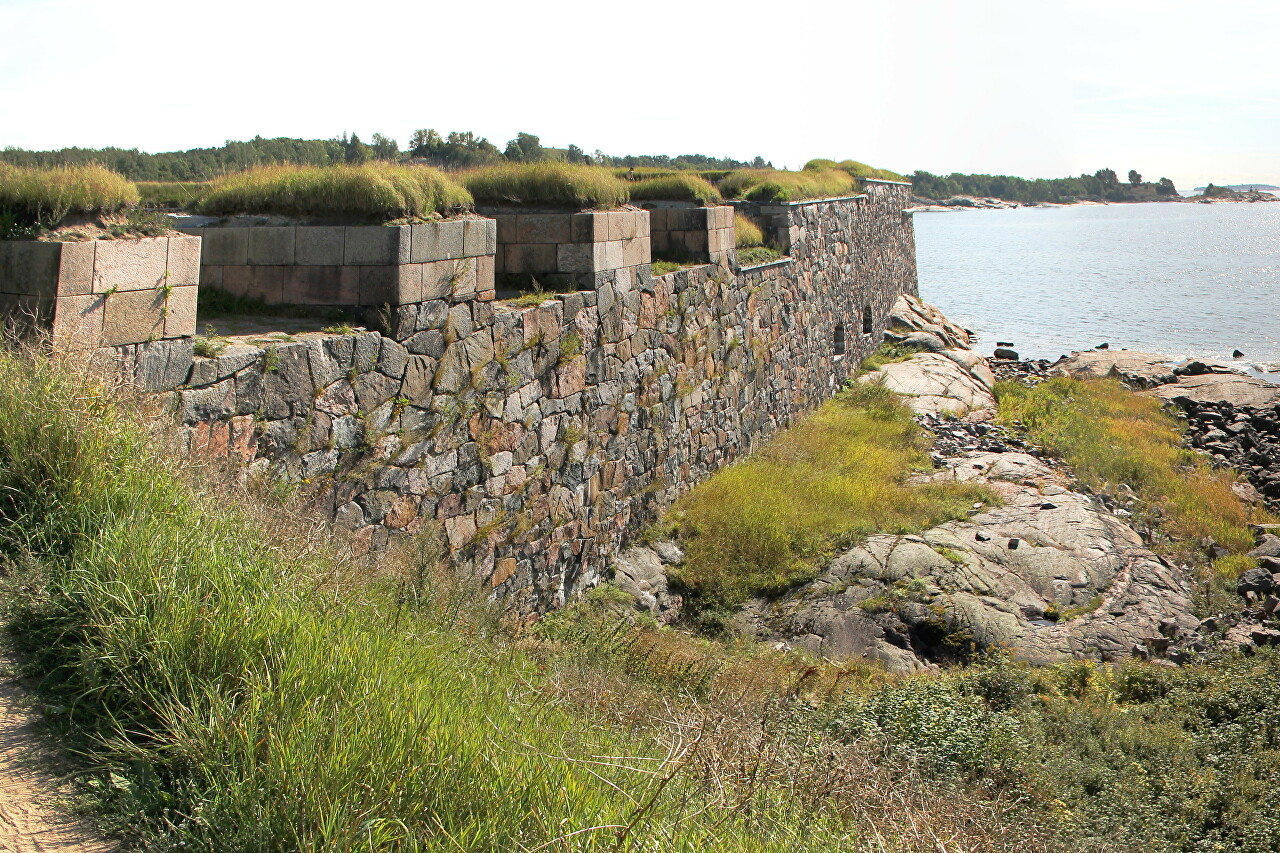
This is the outermost line of defense of the fortress, the walls of which rise from the very edge of the sea. This is the outermost line of defense of the fortress, the walls of which rise from the very edge of the sea. Construction of the coastal fortifications began in 1750 and was completed in 1753.
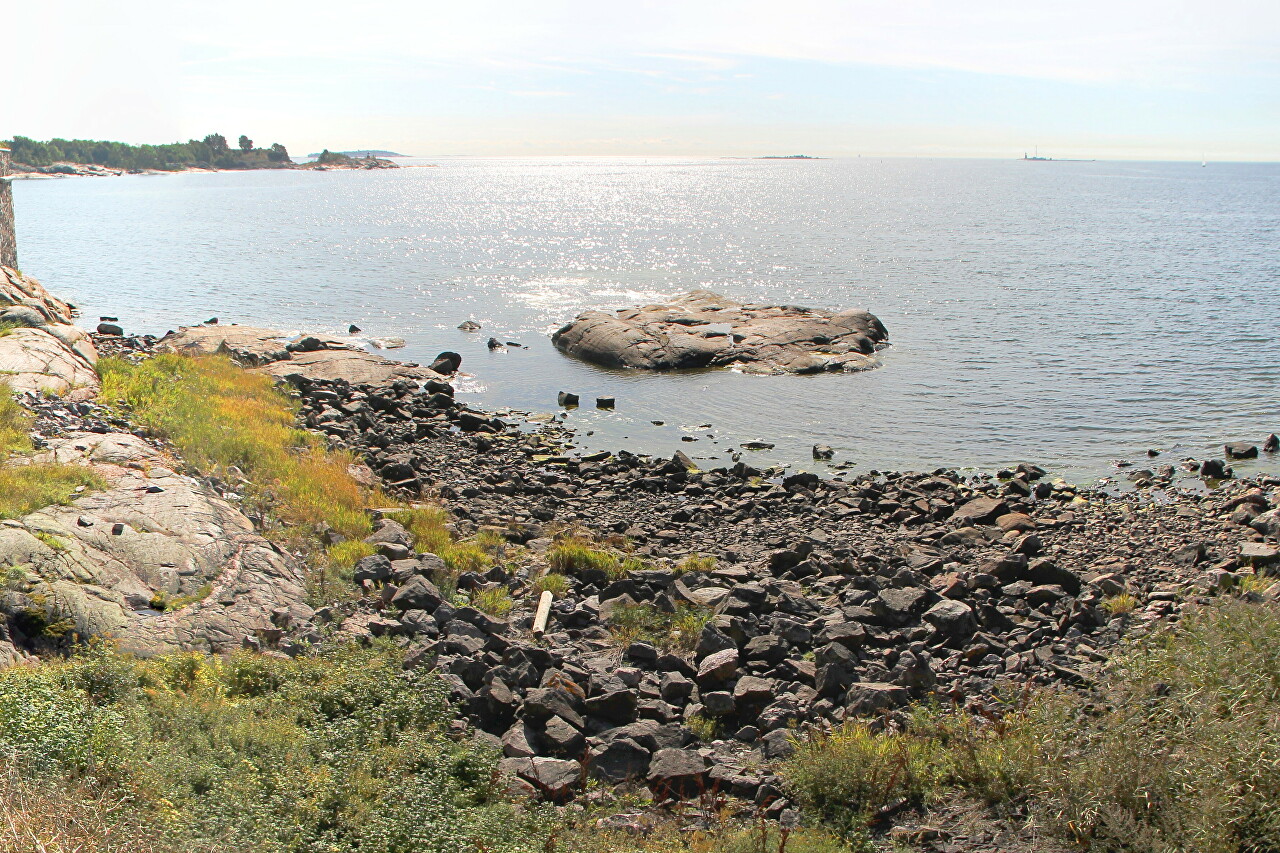
Originally there were watchtowers at three corners of the wall, but they were dismantled in the nineteenth century. There were a total of 22 gun casemates, closed from the inside by walls with loopholes, in case the enemy broke into the courtyard. In the Russian era, the fortifications were reinforced from above with earth mounds, and the inner walls of the casemates were dismantled. Some of the embrasures facing the sea were bricked up, while others were enlarged. During the bombardment of the fortress by the Anglo-French squadron in 1857, the bastions did not receive much damage. In the second half of the nineteenth century, defensive importance passed to batteries with long-range rifled guns and coastal fortifications were abandoned, gradually collapsing. In 1913, the fairway of the Kustaanmiekka Strait was deepened by blasting, which caused considerable damage to the bastions.
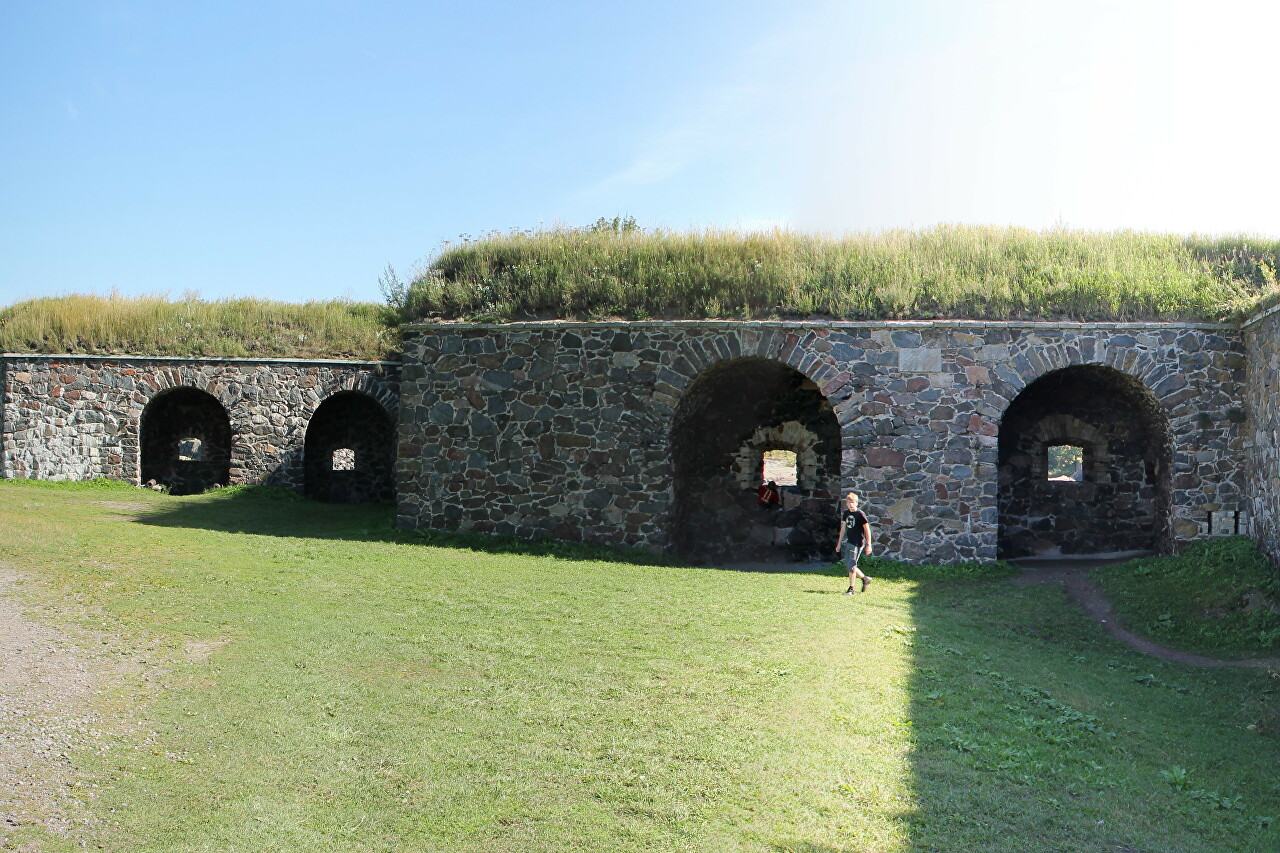
After Finland gained independence, the coastal fortifications were declared a national monument in 1919. In the early thirties, as part of a program to combat unemployment, the fortifications were renovated, and the courtyard was supposed to be used as a platform for mass events. However, the walls continued to collapse and in the 1980s the casemates were closed to the public due to the danger of collapse. to the public due to the risk of collapse.
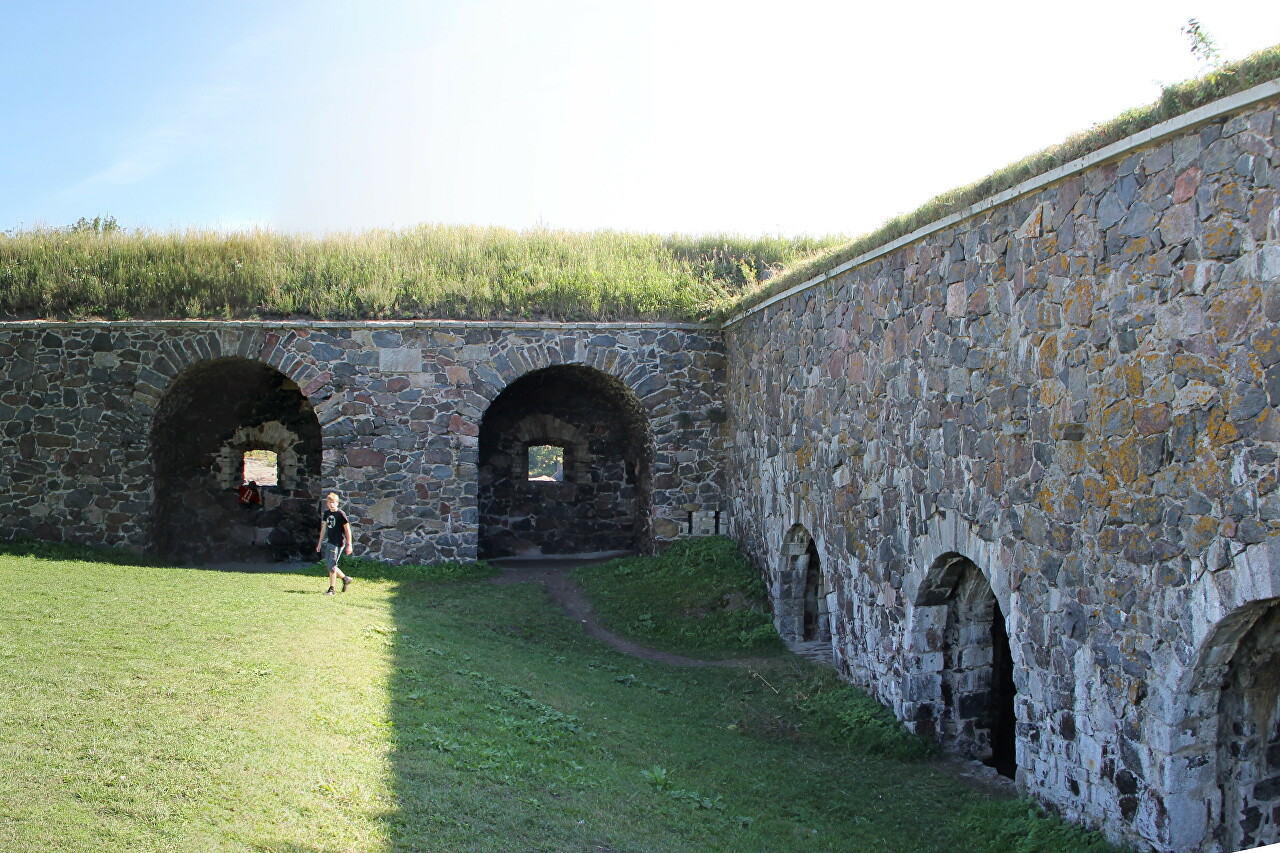
Major reconstruction of the coastal fortifications began in 1992, while the casemate arches were strengthened, waterproofing and drainage system from the upper firing platforms were restored. The restorers used the same materials as the first builders: granite, plaster, bark, clay and turf.
